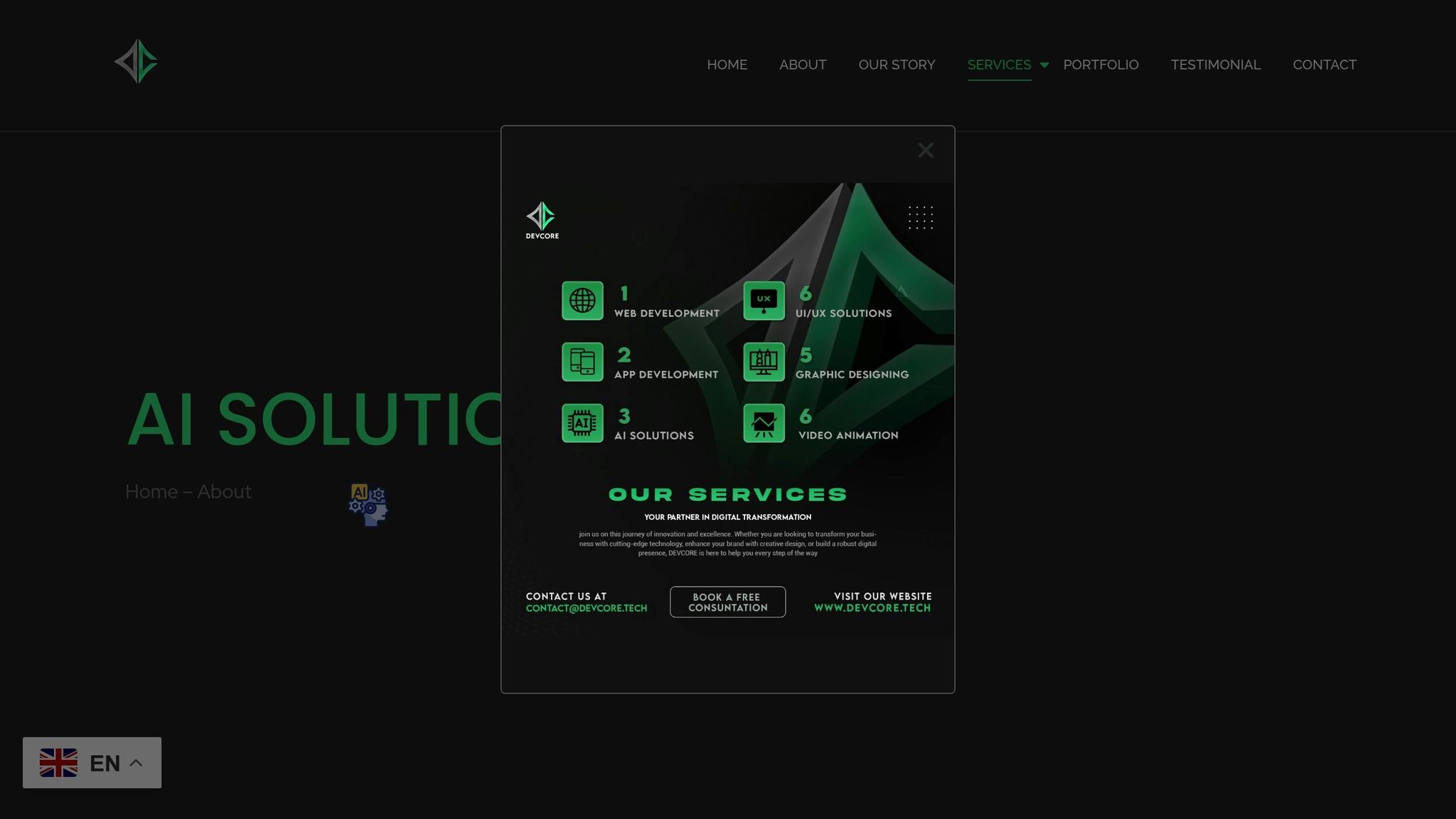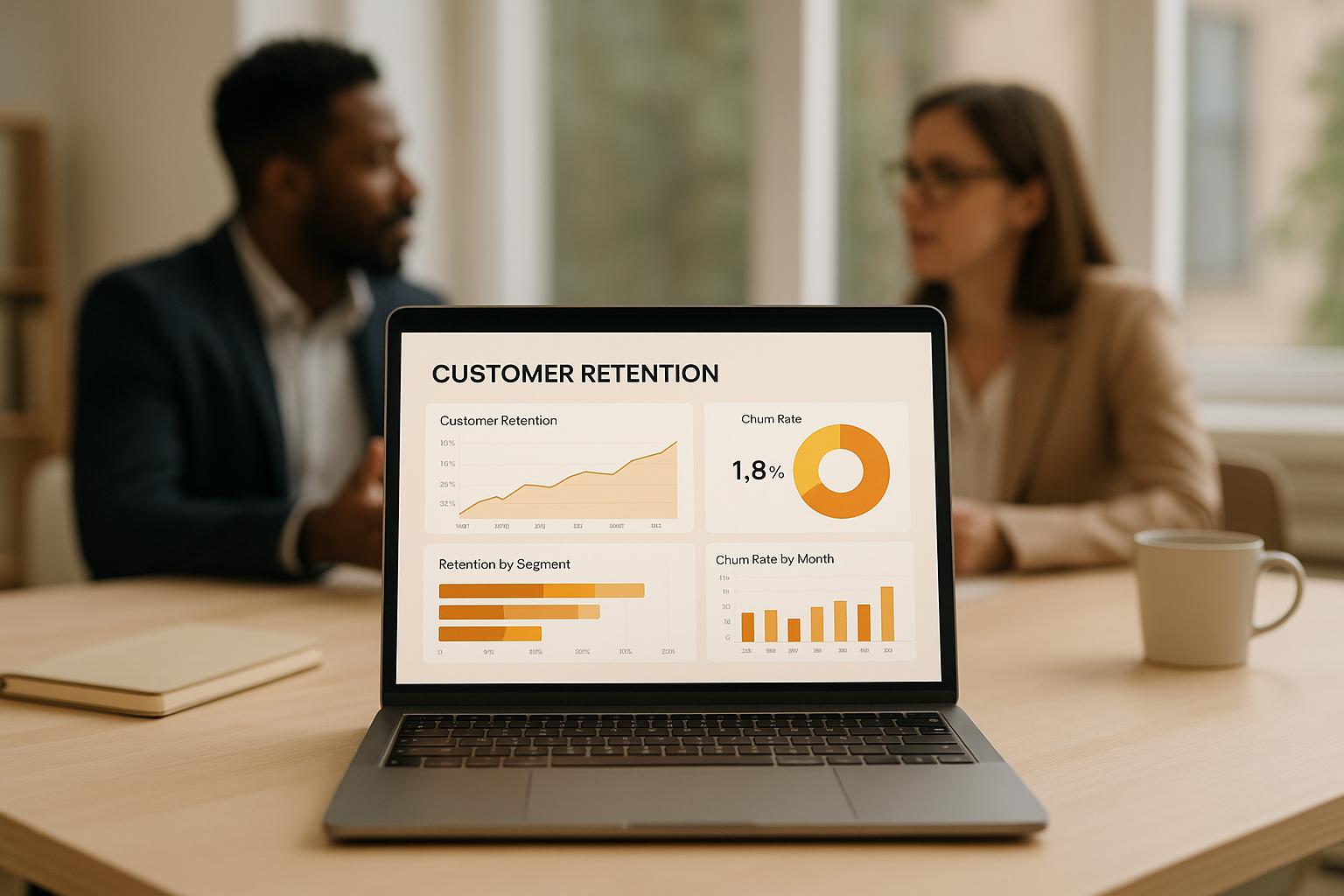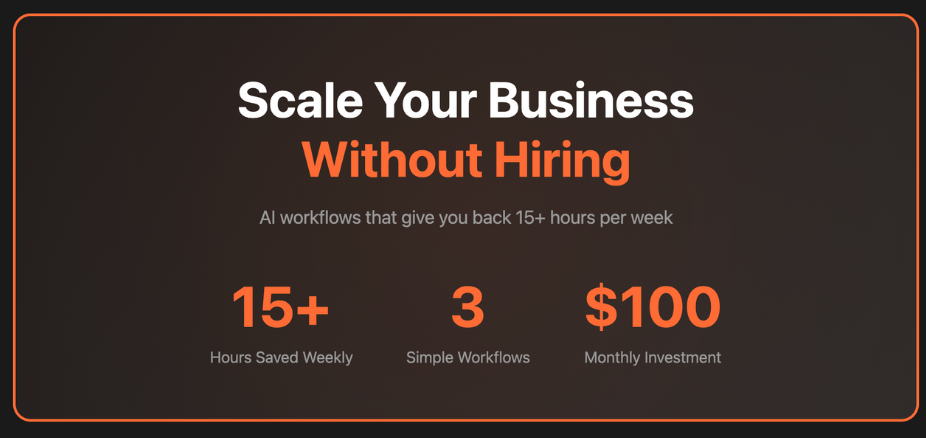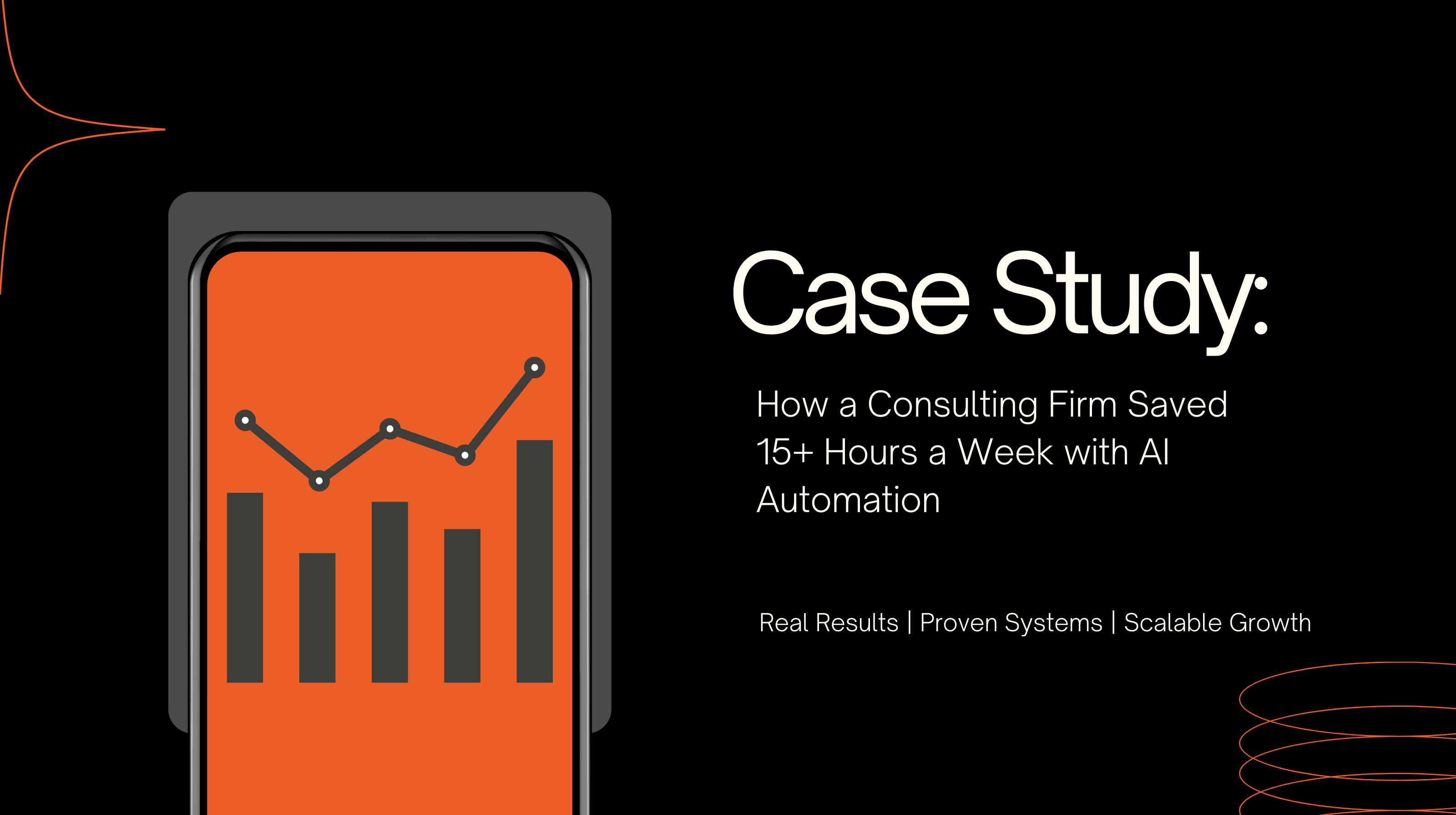AI is transforming how businesses tackle customer churn, helping them predict and prevent it before it impacts revenue. Customer churn - when users stop engaging with a product or service - can cost businesses billions annually. AI tools analyze customer behavior, sentiment, and transaction data to identify early warning signs of disengagement. This allows companies to act proactively, reducing churn rates by up to 35%. Key strategies include:
For example, Netflix uses AI to save $1 billion annually by recommending content and reducing cancellations. Similarly, companies like Patchology and Wyze Labs have improved retention and revenue with AI-powered personalization and support systems. By leveraging these tools, businesses can significantly cut churn, enhance customer satisfaction, and boost long-term profits.
Preventing Customer Churn & Driving Retention with AI | Future of RevOps Series Part 3 | Webinar
How AI Finds At-Risk Customers
AI has revolutionized churn prediction by analyzing extensive customer data to uncover patterns that might escape human analysts. It identifies subtle behavioral shifts early on, allowing businesses to act before churn becomes inevitable. This layered analysis forms the backbone of AI-driven strategies to retain customers effectively.
Using Behavioral and Transaction Data
AI builds detailed customer profiles by monitoring behaviors like session frequency, time spent in-app, feature usage, and activity trends. For example, a shift from daily to weekly logins might signal a potential churn risk. These subtle changes often go unnoticed without AI's ability to flag them early.
Product usage data adds another piece to the puzzle. AI tracks how often customers use specific features, how frequently they return, and broader engagement patterns. A decline in activity can indicate waning interest, giving businesses a chance to intervene.
AI also examines transactional data, such as purchasing habits, payment history, and customer support interactions. For instance, a customer who previously paid on time but recently downgraded to a lower-tier plan might be signaling dissatisfaction. Some companies even integrate external data - like social media activity or competitor insights - to refine their predictions.
Real-Time Data Analysis
AI goes beyond historical data by analyzing customer behavior in real time. This approach shortens the gap between when behaviors change and when businesses respond. Real-time churn prediction enables companies to act within hours or even minutes.
With real-time insights, businesses can set up automated alerts for specific churn indicators. For example, if a high-value customer stops using key features, the system can notify account managers immediately, prompting them to take action. This rapid response can make a significant difference in retaining at-risk customers.
Real-time analysis also allows companies to address problems proactively. If AI detects that a particular feature is causing issues for multiple users, customer success teams can step in with solutions before frustration leads to churn. This shifts retention efforts from being reactive to proactive.
Even onboarding benefits from real-time feedback. When new users experience immediate value, the likelihood of early-stage churn decreases. Quick interventions during onboarding can ensure customers see the benefits of a product right away, improving long-term retention.
Combining Sentiment Analysis with Customer Behavior
While behavioral data shows what customers do, sentiment analysis reveals how they feel. By using natural language processing (NLP) and machine learning, AI can interpret emotions in text or speech, capturing nuances that traditional analytics might miss.
AI-powered sentiment tools monitor customer interactions across various channels, assigning sentiment scores to track emotional trends. These insights provide a deeper understanding of the emotional journey that often leads to churn.
"AI-driven sentiment agents...decode how customers feel, providing unprecedented insight into the emotional journey that precedes churn decisions." - Gnani.ai
When combined with behavioral data, sentiment analysis offers a more complete picture of customer health. For instance, a customer might maintain normal usage patterns but express growing frustration in support interactions. Together, these signals indicate a higher churn risk than either factor alone.
A great example of this approach is Hydrant, a wellness brand that used Pecan AI's predictive modeling to analyze both customer behavior and sentiment. This allowed them to identify three key customer segments: those likely to make repeat purchases, those ready to switch to subscriptions, and former customers who could be re-engaged. The result? A 260% increase in conversion rates and a 310% boost in revenue per customer.
Sentiment analysis also reduces false positives in churn prediction. By understanding the emotional context behind actions, AI models can cut false positives by up to 30% compared to traditional rule-based systems. This ensures that customer success teams focus on genuinely at-risk customers, saving time and resources.
Different customer segments respond to tailored interventions based on their unique sentiment and behavioral patterns. By continuously refining models with feedback and combining AI insights with human expertise, businesses can create highly targeted retention campaigns. This precision helps improve prediction accuracy and ensures interventions are both timely and effective.
AI Solutions to Stop Customer Churn
AI empowers businesses to shift from reactive problem-solving to proactive customer relationship management. By delivering personalized experiences and automating retention efforts, AI helps keep customers engaged and satisfied while reducing churn.
Personalized Customer Engagement
AI enables businesses to craft tailored experiences by analyzing individual customer data, such as purchase history, browsing habits, and social media activity. This goes beyond simply addressing customers by name - it’s about predicting their needs and offering solutions that resonate at the right time.
Take Patchology, for example. The brand saw a 23% increase in customer retention by using AI to recommend products based on each customer’s skin concerns and buying habits. By understanding individual needs, they created a shopping experience that felt both relevant and valuable.
Timing also plays a critical role in engagement. AI ensures that interactions happen when they’ll have the most impact. For instance, if a customer tends to shop on weekends, AI schedules promotional emails to land in their inbox on Friday afternoons, not midweek. This thoughtful timing reduces the risk of overwhelming customers with irrelevant messages and boosts engagement rates.
"AI takes retention from reactive to proactive. By anticipating churn and tailoring each interaction as it happens, it helps brands keep more customers, longer - with less manual work." - Craig Dennis
AI also fine-tunes pricing strategies by analyzing customer behavior, market trends, and competitor pricing. Instead of applying blanket discounts, AI identifies which customers respond to price drops and which prefer premium features or exclusive access. This approach ensures retention efforts are effective while protecting profits.
Automated Retention Workflows
AI-powered workflows streamline retention efforts by automatically responding to churn signals. These systems ensure no at-risk customer is overlooked, integrating seamlessly with existing tools to maintain consistency.
Bank of America’s virtual assistant, Erica, showcases the potential of AI automation. Erica answers customer inquiries in an average of 44 seconds and handles over 2 million interactions daily. This rapid response prevents minor issues from escalating into major problems, reducing the likelihood of churn.
Automation doesn’t just save time - it enhances efficiency. For example, Bolt, a checkout technology platform, adopted DevRev’s AI system to streamline internal support processes. This reduced manual tasks for agents, allowing them to focus on complex customer needs while improving overall service quality.
AI also sends real-time alerts when churn indicators arise. Whether it’s a drop in product usage or negative feedback in support interactions, these alerts provide teams with actionable insights to address issues before they escalate.
Chatbots alone are projected to save businesses over $8 billion annually, thanks to faster resolutions, reduced labor costs, and the ability to handle multiple interactions simultaneously without sacrificing quality.
AI-Powered Customer Support
AI-driven support systems take customer service to the next level by offering context-aware assistance. These systems analyze customer behavior, past purchases, and previous interactions to provide help that feels personalized and effective.
For example, Fotor, a photo editing platform, used LiveX AI ChurnControl to guide trial users struggling with key features. This approach led to a 5X increase in trial conversions and a 2X reduction in churn. By recognizing when users needed help, the system delivered tutorials or direct support to keep them engaged.
Wyze Labs also leveraged AI to automate 80% of customer inquiries, cutting ticket resolution times by 5 minutes and saving millions of dollars. This allowed their human agents to focus on more complex issues, improving both efficiency and customer satisfaction.
AI excels at identifying and addressing pain points in the customer journey, such as confusing onboarding processes or unclear billing procedures. By tackling these issues proactively, businesses can remove sources of frustration before they lead to churn.
Akool’s experience with LiveX AI’s ChurnControl highlights how AI can intervene effectively. The company reduced churn by 26.4% and achieved a 40x return on investment by identifying "silent churners" - customers showing signs of disengagement but who hadn’t yet complained or canceled. AI flagged these customers and triggered retention efforts to re-engage them.
Consistency is another major advantage of AI-powered support. Unlike human agents who may vary in knowledge or communication style, AI provides reliable, high-quality responses across all interactions. This consistency is especially valuable during peak periods when human teams might struggle to keep up.
AI support systems have been shown to lower churn by up to 36%, improve customer satisfaction scores by an average of 33%, and drive revenue growth of up to 22%. By anticipating needs, providing instant assistance, and maintaining service quality, AI creates a solid foundation for reducing churn and building stronger customer relationships.
sbb-itb-d7ea0c6
Measuring Results and Improving Retention
Using AI to improve retention is only effective if you track its performance and make adjustments. By focusing on the right metrics, you can refine your strategies and achieve better results.
Key Metrics for Tracking Retention
To evaluate the success of AI-driven retention efforts, look beyond churn rates. These metrics offer a more detailed understanding of customer well-being:
Net Revenue Retention (NRR) is a standout metric. It indicates how much recurring revenue you retain and grow from existing customers, factoring in upgrades, downgrades, and churn. An NRR above 100% means your revenue is growing even without acquiring new customers - a strong indicator of effective retention.
Gross Revenue Retention (GRR) complements NRR by focusing solely on retained revenue, excluding upsells or expansions. This provides insight into how well your product retains customers without being obscured by growth.
Customer health scores combine data like product usage, satisfaction ratings, and support history to provide a real-time view of customer satisfaction. These scores can help identify customers who may be at risk.
For AI-powered customer support, specific metrics like the Automated Resolution Rate (ARR) are crucial. ARR measures the percentage of customer issues resolved by AI without human intervention, directly impacting operational costs and efficiency.
Another important metric is time-to-value, which measures how quickly new customers experience the benefits of your product. The faster they reach that "aha!" moment, the more likely they are to remain loyal.
Companies using AI for retention often report a 10–30% drop in churn rates and a 20–50% increase in customer lifetime value.
Before and After Comparisons
Tracking metrics over time helps quantify the impact of AI. Start by establishing a 30-day baseline for metrics like task automation, time saved, and issue resolution times. This baseline serves as a reference point for measuring improvement.
Real-world examples highlight the benefits of AI. Motel Rocks and Camping World both saw significant gains in ticket deflection, customer engagement, and agent efficiency after adopting AI solutions. Financially, the cost of AI interactions is about 95% lower than human interactions for routine tasks.
Vodafone leveraged IBM Watson Assistant to automate 60% of routine inquiries, boosting customer satisfaction by 50% and increasing first-time resolution rates from 15% to 60%. Many organizations see returns on investment within 6–12 months, with support costs dropping 25–45% and satisfaction rising by 30%.
"We were dealing with a technology that could potentially transform entire business processes, not just improve a single KPI." - Kate Jensen, Head of Global Revenue at Anthropic
Continuous Improvement Through Customer Feedback
Customer feedback is critical for improving AI performance. Effective retention strategies rely on feedback loops that refine AI tools based on real-world experiences.
For example, Hussle, a gym pass platform, surveyed users who canceled their subscriptions. When 26% of respondents cited switching to local gym memberships, the company introduced a feature allowing users to purchase gym memberships directly through Hussle. This change reduced churn and boosted retention.
Use multiple feedback channels and respond quickly to refine AI models. Regular updates are essential to keep AI tools effective. Compare predictive analytics with actual outcomes to fine-tune onboarding processes and maintain strong customer relationships. Updating AI with recent interactions ensures recommendations stay relevant as products evolve.
One SaaS company used a customer retention dashboard to identify areas for improvement. They found that customers without proper onboarding were more likely to churn. After introducing personalized training and ongoing support, they increased retention by 25% in six months.
Telstra achieved similar success by using Microsoft Azure OpenAI services. They reduced follow-up calls by 20%, with 84% of agents reporting better customer interactions and 90% noting improved efficiency.
To ensure long-term success, create a scorecard for AI initiatives that tracks business performance, operational efficiency, and customer experience. Regularly audit models for bias or drift, and establish feedback loops with users and stakeholders. These steps help refine AI tools and keep customer churn in check.
Custom AI Solutions with Devcore

Devcore takes AI's ability to detect and predict customer churn a step further by offering tailored solutions that actively address it. Many businesses recognize AI's potential but struggle with implementing systems that deliver real, measurable outcomes. This is where Devcore steps in, bridging the gap with precision-focused AI deployment.
Devcore's Leverage Blueprint™
At the heart of Devcore's strategy is the Leverage Blueprint™, a proprietary methodology that identifies churn triggers and applies targeted AI solutions. Instead of relying on one-size-fits-all approaches, this system maps out specific operational inefficiencies and creates custom AI interventions.
The Blueprint conducts a thorough audit of your customer journey - from onboarding to renewal - pinpointing critical drop-off points where disengagement typically occurs. For instance, the early months of a customer’s journey often require the most attention, while later stages may benefit from tailored plans or discounts for cost-sensitive customers.
What makes the Leverage Blueprint™ stand out is its focus on delivering immediate, tangible outcomes. It’s not about adopting AI for the sake of innovation; it’s about identifying where automation can make the biggest difference to your bottom line. By emphasizing customer retention as a key profitability driver, the Blueprint helps businesses reduce the substantial costs associated with acquiring new customers.
For example, telecommunications companies - which face an average monthly churn rate of 2.6% - might use the Blueprint to focus on analyzing usage patterns and triggering proactive engagement. SaaS companies, on the other hand, could benefit from automating onboarding processes and tracking feature adoption. This detailed mapping lays the groundwork for creating AI tools that drive meaningful retention strategies.
Custom AI Tools for Customer Retention
Devcore develops advanced AI tools designed to tackle churn head-on. These include automated engagement systems that trigger personalized outreach based on customer behavior, sentiment analyzers that detect early warning signs in communications, and real-time dashboards that deliver actionable insights.
A major advantage of Devcore’s approach is its ability to integrate multiple data sources for effective churn modeling. By combining transaction history, support interactions, product usage metrics, and external signals, Devcore creates comprehensive customer health profiles. These profiles not only predict the likelihood of churn but also uncover the underlying reasons behind it.
The tools are designed to seamlessly integrate with your existing tech stack - whether you're using Salesforce, HubSpot, or custom-built platforms. Features like API integrations, custom dashboards, and workflow optimization tools allow your team to act on AI-driven insights without toggling between systems. Repetitive tasks, such as CRM updates, email responses, and data entry, are automated, freeing up your team to focus on high-value activities.
For businesses with complex customer segments, Devcore offers AI agents that align retention strategies with specific groups. This segmentation approach has proven highly effective. For example, AT&T reduced millennial churn by 30% after tailoring retention programs based on segmentation analysis.
Measurable Business Results
Devcore’s AI solutions deliver measurable results that directly impact profitability. One of the most immediate benefits is revenue protection. Studies show that increasing customer retention rates by just 5% can boost profits by 25% to 95%. Given that acquiring a new customer can cost 5 to 25 times more than retaining an existing one, the financial advantages are clear.
Devcore’s AI-driven personalization can lower churn rates by 28% and drive up to 40% higher revenue growth through improved customer targeting. Their systems excel at identifying high-value customers, enabling businesses to implement dynamic pricing strategies that further enhance retention and prevent churn.
For businesses in competitive U.S. markets, these gains compound over time. Devcore’s systems automate the analysis of customer churn behavior, making it easier to act on insights. The result is a retention program that becomes smarter and more effective as it processes more data.
Additionally, Devcore offers flexible pricing plans, ensuring that even small businesses can access these AI-powered tools. Each plan includes strategy sessions and workflow audits to ensure the solutions continue to deliver results as your business evolves.
Conclusion: Better Customer Retention with AI
AI has reshaped customer retention, shifting it from a reactive process to a forward-thinking strategy that strengthens relationships and boosts both satisfaction and profits. Studies show that using AI to personalize customer experiences can significantly enhance loyalty and satisfaction.
Even small improvements in retention rates can have a big financial impact, potentially increasing profits by 25% to 95%. On top of that, businesses using AI-driven personalization have reported up to 40% higher revenue growth.
This success is largely due to AI's ability to process massive amounts of data, uncover patterns, and deliver tailored engagement at scale. By reducing churn and increasing customer value, AI becomes a key tool for driving sustainable growth.
Devcore's Leverage Blueprint™ and custom AI tools take these benefits a step further. By combining predictive analytics with efficient operational workflows, these tools create tailored systems that integrate smoothly with existing processes. This approach ensures better outcomes compared to one-size-fits-all solutions. The combination of predictive insights, automation, and real-time engagement builds a retention strategy that evolves and improves over time.
Blending AI-powered personalization with human expertise allows businesses to build meaningful, long-term customer relationships and stay ahead in today’s competitive landscape.
FAQs
How does AI detect early signs of customer churn that people might miss?
AI excels at detecting subtle indicators of customer churn by sifting through vast amounts of data and pinpointing patterns that might slip past human observation. Using predictive models, it can identify behaviors like declining engagement, fewer purchases, or changes in customer sentiment, giving businesses a chance to act before losing customers.
By catching these warning signs early, companies can roll out focused retention efforts - like tailored promotions or enhanced customer support - to strengthen connections and improve retention rates.
How can AI help create personalized strategies to reduce customer churn?
AI has the potential to significantly reduce customer churn by helping businesses create personalized engagement strategies. For example, it can analyze individual customer behavior to craft tailored messages and offers that align with their specific preferences. With predictive analytics, businesses can spot customers who might be on the verge of leaving and take action to address their concerns before it’s too late.
AI-powered tools also make it possible to group customers into smaller, highly specific segments based on shared traits. This makes designing targeted campaigns much more effective. By spotting patterns like reduced activity or negative feedback, AI equips teams to step in early and resolve issues before they grow into bigger problems.
How can businesses evaluate the effectiveness of AI-driven strategies to reduce customer churn?
Businesses can measure how well AI-powered retention strategies are working by keeping an eye on key performance indicators (KPIs). Some of the most important ones include customer retention rate, customer lifetime value (CLV), Net Promoter Score (NPS), and customer satisfaction (CSAT). These metrics reveal how effectively AI tools are reducing churn and boosting customer loyalty.
To keep improving, it’s essential to regularly review these metrics, look for patterns, and pinpoint areas that need adjustment. AI systems can also provide predictive insights, enabling businesses to tweak their strategies ahead of time for better outcomes. By blending data-driven decisions with consistent fine-tuning, companies can get the most out of their retention efforts.
Related posts
- Manual Workflows Slowing Growth? AI Solutions
- Ultimate Guide to Scaling Business with Automation
- How to Measure Automation ROI: 6 Key Metrics
- Custom AI Models for Predictive Analytics
{"@context":"https://schema.org","@type":"FAQPage","mainEntity":[{"@type":"Question","name":"How does AI detect early signs of customer churn that people might miss?","acceptedAnswer":{"@type":"Answer","text":"<p>AI excels at detecting subtle indicators of customer churn by sifting through vast amounts of data and pinpointing patterns that might slip past human observation. Using predictive models, it can identify behaviors like declining engagement, fewer purchases, or changes in customer sentiment, giving businesses a chance to act before losing customers.</p> <p>By catching these warning signs early, companies can roll out focused retention efforts - like tailored promotions or enhanced customer support - to strengthen connections and improve retention rates.</p>"}},{"@type":"Question","name":"How can AI help create personalized strategies to reduce customer churn?","acceptedAnswer":{"@type":"Answer","text":"<p>AI has the potential to significantly reduce customer churn by helping businesses create <strong>personalized engagement strategies</strong>. For example, it can analyze individual customer behavior to craft tailored messages and offers that align with their specific preferences. With predictive analytics, businesses can spot customers who might be on the verge of leaving and take action to address their concerns before it’s too late.</p> <p>AI-powered tools also make it possible to group customers into smaller, highly specific segments based on shared traits. This makes designing targeted campaigns much more effective. By spotting patterns like reduced activity or negative feedback, AI equips teams to step in early and resolve issues before they grow into bigger problems.</p>"}},{"@type":"Question","name":"How can businesses evaluate the effectiveness of AI-driven strategies to reduce customer churn?","acceptedAnswer":{"@type":"Answer","text":"<p>Businesses can measure how well AI-powered retention strategies are working by keeping an eye on key performance indicators (KPIs). Some of the most important ones include <strong>customer retention rate</strong>, <strong>customer lifetime value (CLV)</strong>, <strong>Net Promoter Score (NPS)</strong>, and <strong>customer satisfaction (CSAT)</strong>. These metrics reveal how effectively AI tools are reducing churn and boosting customer loyalty.</p> <p>To keep improving, it’s essential to regularly review these metrics, look for patterns, and pinpoint areas that need adjustment. AI systems can also provide predictive insights, enabling businesses to tweak their strategies ahead of time for better outcomes. By blending data-driven decisions with consistent fine-tuning, companies can get the most out of their retention efforts.</p>"}}]}




